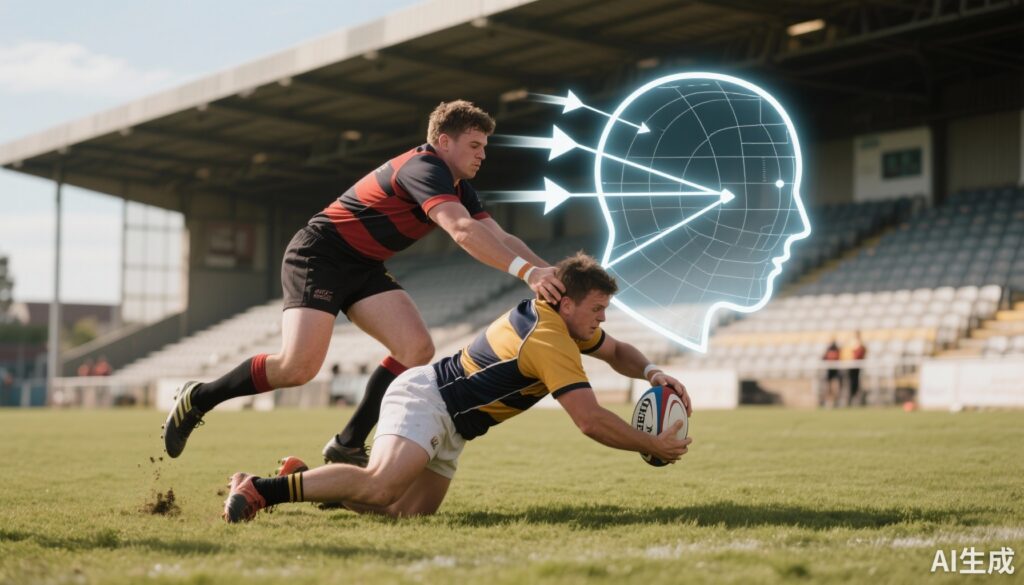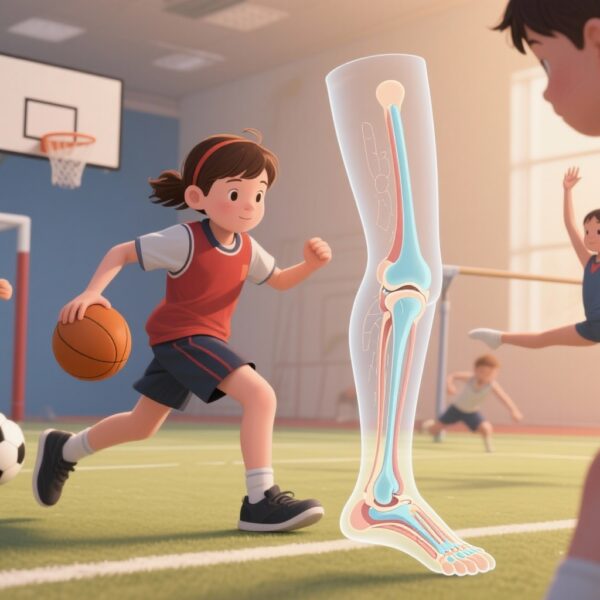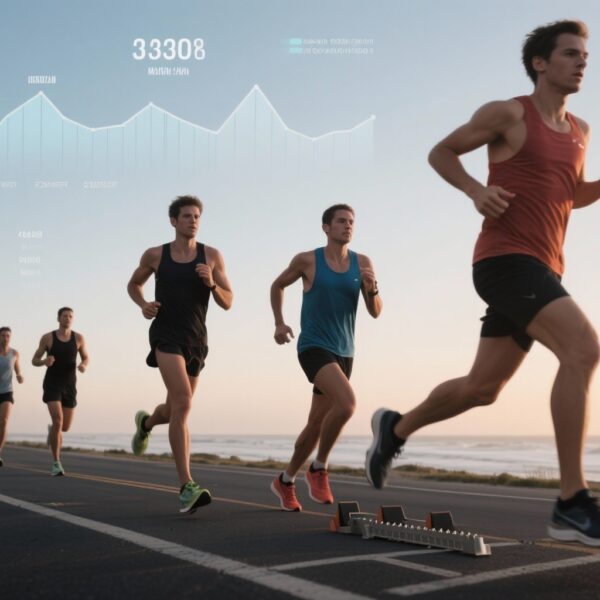Highlight
– Tackles and rucks accounted for approximately 60% of verified head acceleration events (HAEs) in 259 male community rugby players monitored with instrumented mouthguards.
– Tackle characteristics produced role-dependent risk: high tackles increased head loading for ball carriers, while low tackles increased head loading for tacklers — indicating a safety trade-off between protectingeach role.
– Younger players (U13) experienced greater rotational loading as ball carriers, likely driven by secondary mechanisms (head-to-ground/body-to-ground). Defensive rucks, particularly U19 jacklers, carried higher HAE incidence.
Background
Concerns about the acute and long-term neurological consequences of head impacts in contact sports have focused attention on both concussive injuries and the cumulative effect of sub-concussive head loading. Rugby union, in particular, has undergone multiple rule and education changes intended to reduce dangerous contact and concussion risk. However, much of the evidence base has focused on elite levels; community rugby — which comprises the majority of participation worldwide and includes players across youth age grades — remains relatively understudied with respect to objective head loading patterns.
Instrumented mouthguards, which capture head kinematics during play, are increasingly used to quantify head acceleration events (HAEs). Quantifying HAE frequency and magnitude by match context (e.g., tackle vs ruck), player role (tackler vs ball carrier), and age grade provides actionable data to guide coaching, rule changes, and targeted interventions to reduce head injury risk.
Study Design
Bussey and colleagues performed a prospective observational cohort study in male community rugby across four grades: U13, U15, U19 and Premier senior men. The cohort comprised 259 players across 72 matches. Players wore instrumented mouthguards that triggered sensor acceleration events when linear acceleration exceeded a 5 g threshold. All triggered events and video footage were reviewed and verified to identify true HAEs and to code match context (phase of play), player position/role (tackler, ball carrier, jackler, etc.) and contact characteristics (tackle height, posture, secondary mechanisms).
Primary endpoints included HAE frequency, incidence rate per 1000 player-hours, and head kinematics: peak linear acceleration (PLA), peak angular acceleration (PAA), and a rotational velocity change index (RVCI). Statistical models assessed differences in HAE frequency and magnitude across grades, positions and contact scenarios.
Key Findings
Overall HAE Burden
From 72 matches, 8,593 sensor-triggered acceleration events were recorded and 7,358 HAEs were verified on synchronized video review. Tackles and rucks together contributed roughly 60% of verified HAEs, making them the principal match phases for head loading in community rugby.
Tackle Characteristics and Role-Specific Loading
Distinct patterns emerged when comparing tacklers and ball carriers:
- High tackles (i.e., contact with upper torso/shoulder/neck/head region) significantly increased head loading in ball carriers: PLA increased by a mean of 4.16 g (p = 0.02), PAA by 443 rad/s2 (p = 0.002), and RVCI by 1.87 rad/s (p = 0.04).
- Low tackles — commonly advocated to reduce head contact for the ball carrier — were associated with increased head loading in tacklers: PLA increased by 4.9 g (p = 0.004) for tacklers performing low tackles.
- Upright tackler posture correlated with a higher likelihood of producing high tackles (p < 0.001) and head-to-head contacts (p = 0.019), suggesting coaching emphasis on posture may reduce dangerous contact patterns.
These findings describe a safety trade-off: reducing tackle height may protect the ball carrier from higher-magnitude impacts but may transfer greater loading to the tackler.
Age-Grade Differences and Secondary Mechanisms
Age grade modified exposure patterns:
- U13 ball carriers experienced higher rotational loading than tacklers (RVCI +5.01 rad/s, p = 0.008). Video analysis suggested this increase was often due to secondary mechanisms such as head-to-ground and body-to-ground impacts following tackles. This pattern is consistent with less-developed balance, motor control and tackling/landing skills in younger players.
- Defensive rucks presented a higher HAE risk than attacking rucks across grades (all p < 0.05). The U19 jackler role showed a particularly elevated incidence rate ratio (IRR = 2.27, p < 0.0001) for HAEs, indicating phase- and role-specific vulnerability within the breakdown.
Incidence and Kinematic Magnitudes
While the study reports many HAEs, the majority were of lower magnitude; nevertheless, statistically and clinically meaningful increases in PLA and PAA were associated with specific contact scenarios described above. The authors used multiple complementary kinematic measures (PLA, PAA, RVCI) to capture both linear and rotational components of head loading because rotational acceleration is increasingly implicated in diffuse brain injury mechanisms.
Expert Commentary and Interpretation
The study by Bussey et al. provides valuable, objective data on head loading in community-level rugby. Several clinical and policy-relevant points emerge:
Clinical and Mechanistic Insights
Rotational loading was prominent in younger players and in scenarios involving secondary ground contact. Rotational acceleration is believed to produce shear strains in brain tissue and has been associated with greater risk of diffuse axonal injury in experimental models. The observed increase in RVCI for U13 ball carriers underscores the need for skill development around safe falling and bracing techniques, alongside tackle technique training.
Policy and Rule Implications
The trade-off between lowering tackle height (benefitting the ball carrier) and increasing tackler loading complicates one-size-fits-all regulatory approaches. Interventions may need to be role- and age-specific: for example, emphasizing upright posture and head positioning for tacklers to decrease head-to-head contacts, while coaching safe tackle completion and roll-away/brace techniques for ball carriers and younger athletes to reduce head-to-ground impacts.
Practical Interventions
Actionable strategies include:
- Targeted coaching emphasizing tackler posture, contact zone awareness and wrap-and-drive technique to reduce both high tackles and head-to-head events.
- Age-appropriate training for falling, landing and post-impact control, particularly for U13 and younger players.
- Breakdown-specific skills training (jackling technique) and officiating focus on ruck safety to address the elevated risk in defensive rucks.
- Selective use of instrumented mouthguards or other monitoring approaches to identify high-risk players or match situations for focused intervention.
Limitations and Generalizability
Important limitations temper interpretation:
- The cohort included only male players in community settings; findings may not generalize to female players or elite levels where physicality, stature and playing patterns differ.
- The instrumented mouthguard threshold of >5 g will capture many non-injurious head accelerations; the clinical significance of individual HAEs — especially sub-concussive events — remains uncertain in the absence of linked clinical outcomes or biomarker data.
- Sensor accuracy and mouthguard fit can influence kinematic measurement. Although the authors verified events with video, absolute kinematic values should be interpreted with consideration of device limitations and possible soft-tissue coupling variance.
- Cross-sectional match sampling cannot establish longitudinal relationships between HAE burden and neurological outcomes; prospective long-term follow-up is required to link exposure patterns with clinical sequelae.
Conclusion
Bussey et al. provide robust, video-verified evidence that tackles and rucks drive most head acceleration exposure in male community rugby and that tackle height, tackler posture and player role shape both the frequency and magnitude of HAEs. The identification of role- and age-specific risk patterns — including the higher rotational loading in younger ball carriers and increased HAE incidence in defensive rucks/jacklers — suggests that single-policy solutions are unlikely to be optimal. Instead, multifaceted approaches that combine coaching, targeted skill development, match officiating emphasis, and selective use of monitoring technology are needed to reduce head-loading risk while recognizing potential trade-offs between protecting different player roles.
Future research priorities include replication in female and elite cohorts, longitudinal studies linking quantified HAE exposure to clinical and neuroimaging outcomes, and randomized or implementation trials of targeted interventions (e.g., coaching modules, rule modifications) designed to reduce high-magnitude HAEs without inadvertently increasing exposure for other player roles.
Funding and clinicaltrials.gov
Funding and specific trial registration details were not provided in the study abstract. The primary reference is:
Bussey MD, Salmon D, Nanai B, Romanchuk J, Gomez RM, Tong D, Sole G, Tucker R, Falvey É. Contact Role and Tackle Characteristics Shape Head Acceleration Exposure in Male Community Rugby: A Cohort Study Utilising Instrumented Mouthguards. Sports Med. 2025 Sep 17. doi: 10.1007/s40279-025-02314-2. Epub ahead of print. PMID: 40960717.
References
1. Bussey MD, Salmon D, Nanai B, Romanchuk J, Gomez RM, Tong D, Sole G, Tucker R, Falvey É. Contact Role and Tackle Characteristics Shape Head Acceleration Exposure in Male Community Rugby: A Cohort Study Utilising Instrumented Mouthguards. Sports Med. 2025 Sep 17. doi: 10.1007/s40279-025-02314-2. Epub ahead of print. PMID: 40960717.
2. McCrory P, et al. 5th International Consensus Statement on Concussion in Sport. Br J Sports Med. 2023. (International consensus statements provide contemporary recommendations on concussion recognition, management and prevention strategies in sport.)
Note: Additional literature on instrumented mouthguards, head impact biomechanics and rugby concussion epidemiology can further contextualize these findings; readers are encouraged to consult recent systematic reviews and consensus documents for broader synthesis.



